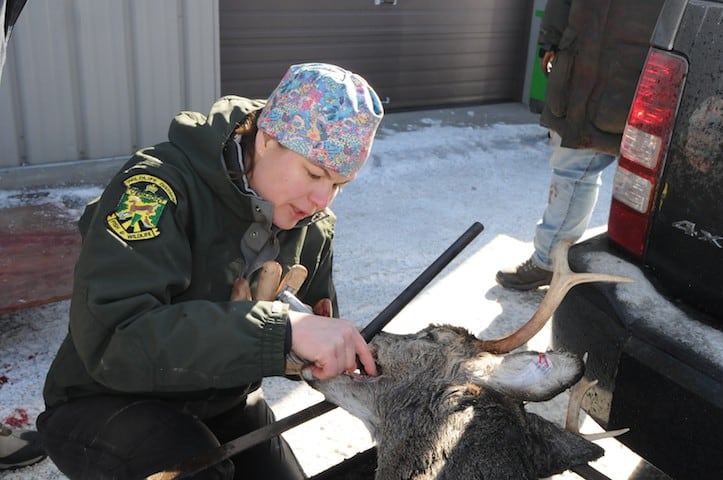
MONTPELIER, Vt. – Hunters are gearing up for the start of Vermont’s traditionally popular 16-day regular deer season that begins Saturday, Nov. 13 and ends Sunday, Nov. 28.
A hunter may take one legal buck during this season if they did not already take one during the archery deer season. The definition of a legal buck depends on the Wildlife Management Unit. A map of the WMUs is on pages 22 and 23 of the 2021 Vermont Hunting & Trapping Guide available from license agents statewide.
“The greatest numbers of deer continue to be in western regions of the state and other valley areas,” said Vermont Fish & Wildlife’s deer biologist Nick Fortin. “The Green Mountains and Northeast Kingdom offer more of a big woods experience with fewer, but often larger, deer.”
Vermont hunting licenses include a buck tag for this season and a late season bear tag for Nov. 13-21. Hunters under 18 years of age can receive a discount. Licenses are available on Fish & Wildlife’s website and from license agents statewide.
Fish & Wildlife urges hunters to wear a fluorescent orange hat and vest to help maintain Vermont’s very good hunting season safety record.
A 2021 Deer Hunting Guide can be downloaded from the department’s website at www.vtfishandwildlife.com. The guide includes a map of the WMUs, season dates, regulations, and other helpful information.
Hunters who do not go to a biological reporting station are asked to provide a tooth from their deer. Obtain a tooth envelope from your regular reporting agent. Remove one of the middle incisor teeth, being careful to include the root. Place the tooth in the envelope and give it to the reporting agent. Each tooth will be cross sectioned to accurately determine the deer’s age, and the results will be posted on the Fish & Wildlife website next spring.